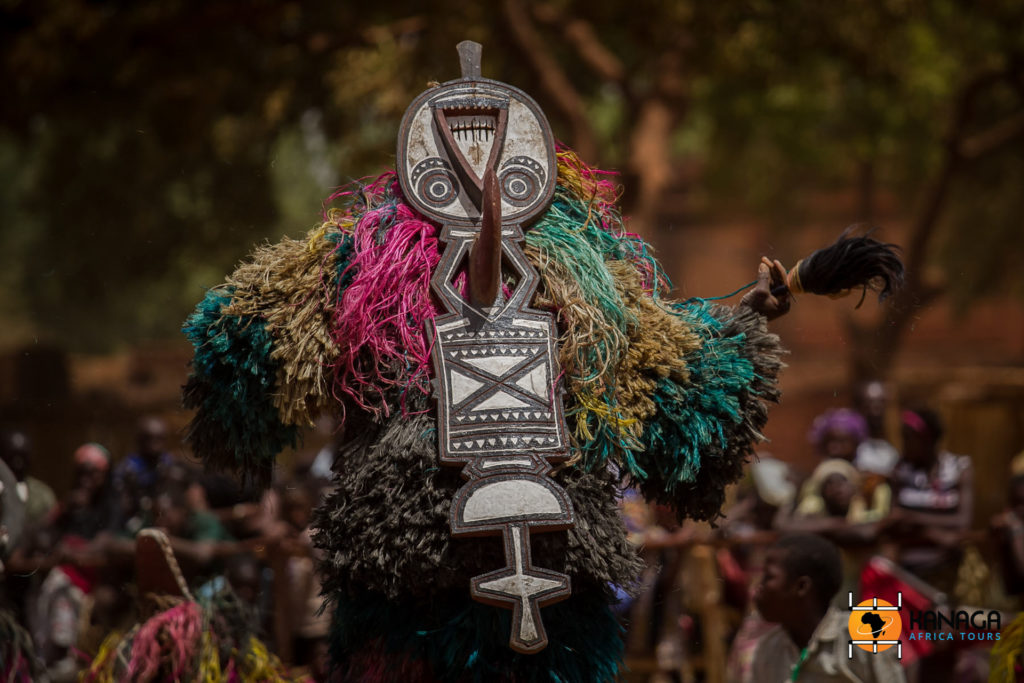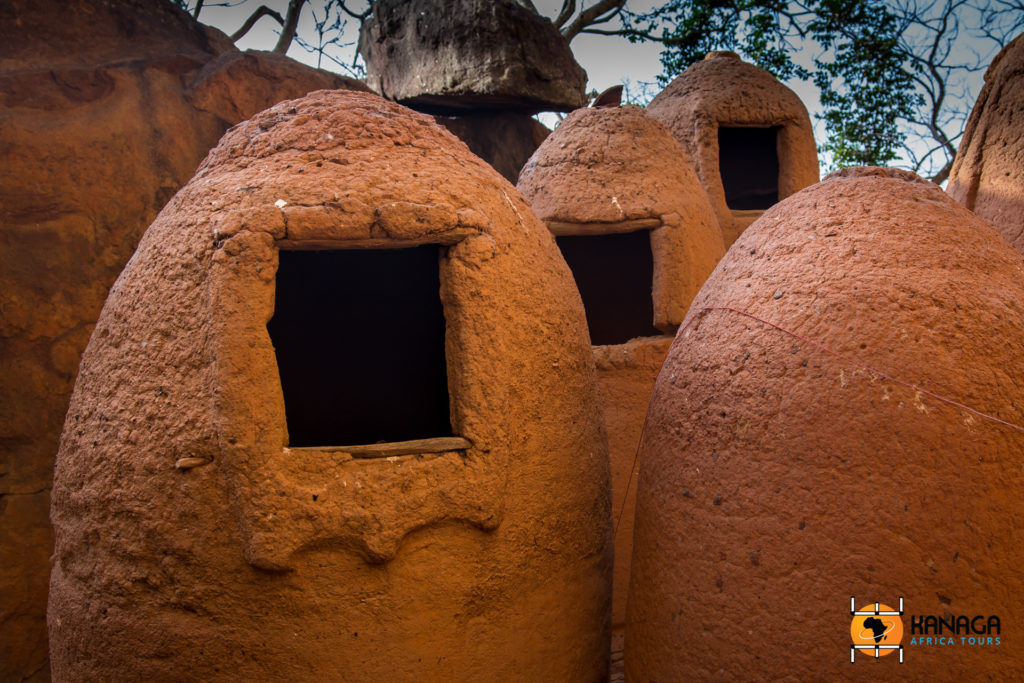Point your compass towards the deep south-west and you will arrive in the Eden of Burkina Faso! An emerald green and fiery red region of lush forests and clay slopes, sugar cane and banana plantations, fertile market gardens and rice paddies irrigated by the bounty of perennial waters flowing copiously from the cliffs and surreal peaks of ancient wind-eroded formations. But first, don’t forget to make a stop in the country’s most characteristic and lively town, Bobo-Dioulasso!
Bobo-Dioulasso is a perfect mix of neo-Sudanese African atmosphere and architecture and vague French colonial reminiscences: the city of bicycles, a low-cost ecological means of transport that was strongly sponsored by the late Thomas Sankara, with its beautiful avenues lined with mangoes.
The Grand Marché is a typical African city market, with the rare characteristic that the atmosphere here is relaxed and no one will put much pressure on you to sell anything, despite the huge selection of colourful fabrics and wonderful handicrafts, as well as everyday products and foodstuffs.
Not far away, at the meeting point between the ‘modern’ part and the historic quarters, more like a rural village engulfed by the city, is the beautiful Grande Mosquée, built in 1893, which adds to the character of ‘Bobo’, especially at sunset, when its façade lights up in warm golden hues, while the muezzin sings the call to prayer. It is a splendid example of Sahelo-Sudanese architecture made of brick and clay plaster, repainted with lime, with conical minarets, enlivened by the typical wooden poles that protrude horizontally from the walls and are used as supports for periodic plastering. Unfortunately, attempts to include it in the UNESCO list have failed and some restorations have proved unsatisfactory, without detracting from its incredible charm.
Leaving behind the bustling cultural and nightlife of the Bobo and Dioula families, the landscape gradually changes in the direction of Banfora, entering Senoufo land, one of the country’s most luxuriant regions, with green natural landscapes, known as ‘the garden of Burkina Faso‘. It is an ideal destination offering a wide range of itineraries for magnificent treks in contact with nature and the traditions of rural peoples who have remained strongly identified.
Lake Tangréla is located 7 km from the town, amidst beautiful aquatic scenery of water lilies blooming under the silvery glow of dawn, dotted with fishermen’s pirogues and myriads of birds awakening to the sun’s rays, while hippopotamuses calmly take to the water’s surface.
A short distance away, passing through an emerald green plain of sugar cane plantations, vegetable gardens and tropical palms, you reach the magnificent Karfiguéla waterfalls, an ornithological paradise, surrounded by spectacular cliffs and inhabited by monkeys. During the rainy season and in the periods immediately following, the spectacle of the stepped jets and natural basins is truly incomparable. From here, continue for about 3 km until you reach an extraordinary rock formation, the Dômes de Fabedougou, in the form of domes, spires and bell towers, which has been sculpted over the ages by atmospheric agents.
But if you really want to take your breath away, especially at sunset, the Pics de Sindou, the most incredible geological formations in the whole of Burkina Faso, located a few kilometres from the village of the same name, are part of a vast, jagged rocky cliff, full of surreally shaped pinnacles, inhabited by colourful parrots, and still retaining traces of ancient human settlements.
People, ancestors of the Senoufo, who also inhabited the mysterious and mystical heights of Niansogoni, where ancient granaries and typical dwellings in decorated clay remain splendidly preserved, embedded and camouflaged under the rocky ribs, on the summit of the impervious cliff, amidst enchanting panoramas full of ancestral magic, jealously guarded in a part of the settlement that cannot be visited, because it is still an object of veneration and the site of sacrificial ceremonies, by the population that now lives more comfortably in the valley, in equally characteristic rural villages, as there is no longer any need to flee the jihad or European colonisation.







